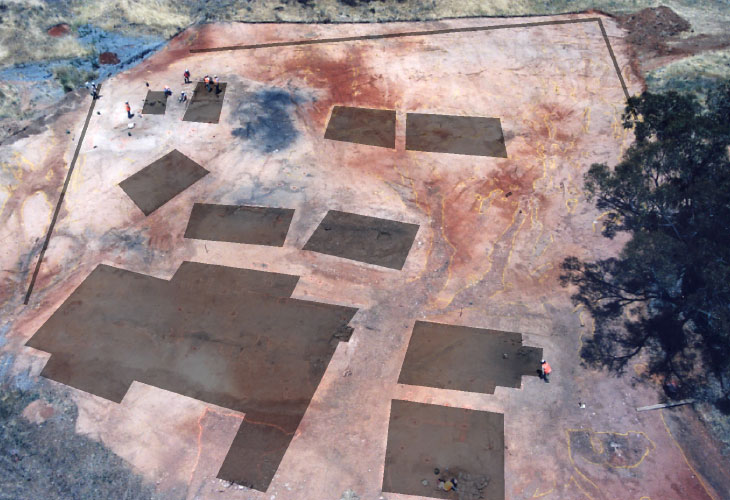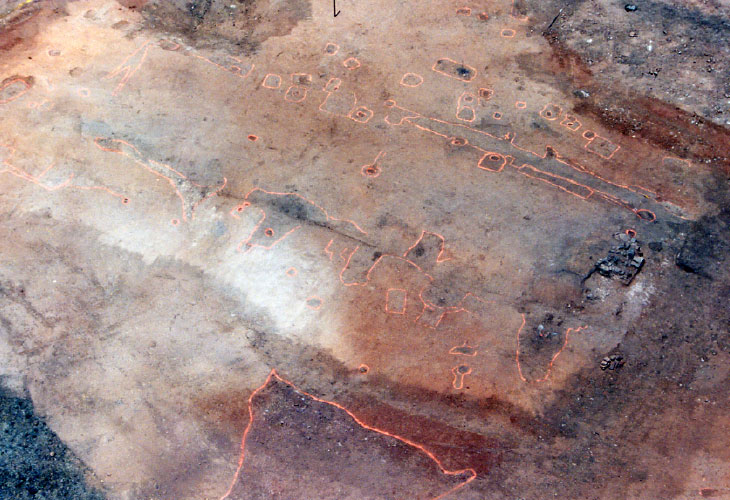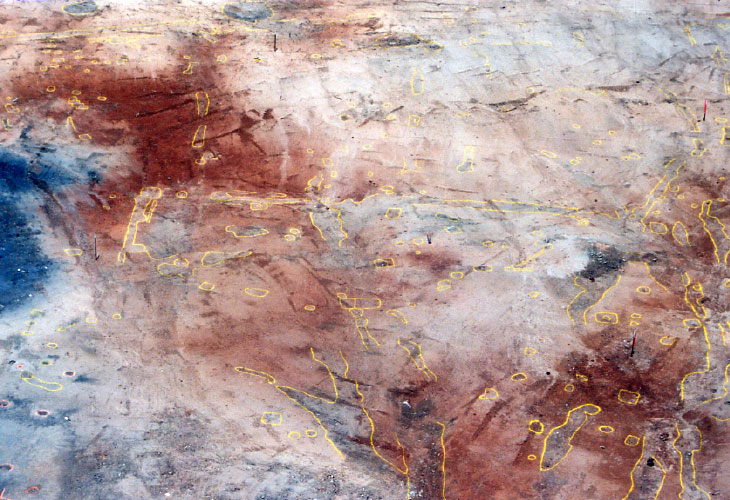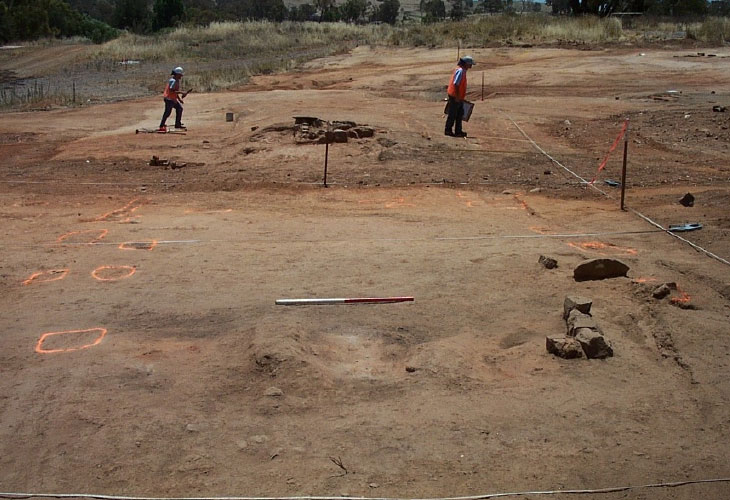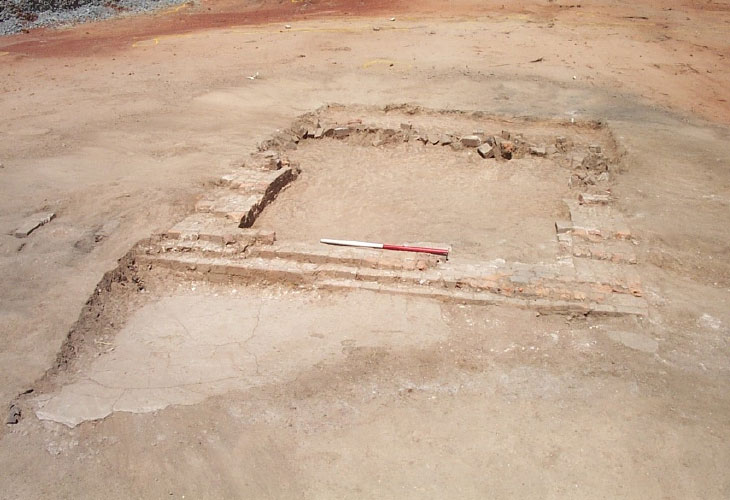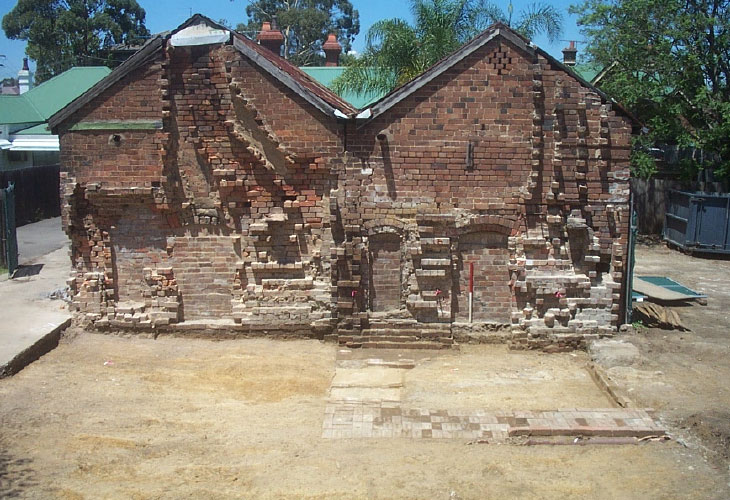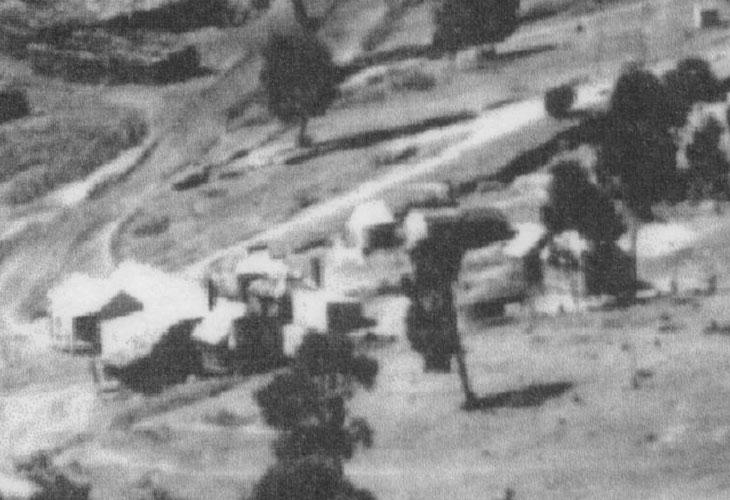Archaeological Sites
- Archaeological Sites
- Errowanbang – Pastoral Station.
- Little Cadia Copper Mine.
- Copper Smelter No. 1.
- Cadia Engine House and the West Cadia Mines (North Section & South Section).
- Cadia Engine House – Its Significance and Conservation.
- Cadia Village – archaeological investigations, 2002.
- Cadia Village – finding the buildings in the 1861 inventory.
- The Chaplain’s House or Underground Manager’s House (Site W001).
- Cadia Village – unexpected results from West Cadia Village.
- Cadia Village – the house that grew and grew.
- Cadia Village – Miners’ Huts.
- Cadia Village – The Bon Accord Hotel.
- Cadia Village – the Cadiangullong Store and the Old Village Centre.
- Artifacts, Assemblages and Life Paths.
- Cadia Cemetery, 1864-1927.
- Waringa Farm – the story of a Conditional Purchase.
- Tunbridge Wells – a history of farm amalgamation.
- Te Anau Homestead – the Holman connection with Cadia continues to 1956.
- Tynan’s Slaughterhouse – from farm to slaughterhouse.
- Wire Gully Gold Diggings and Farm.
Cadia Village – the Cadiangullong Store and the Old Village Centre.
History.
Research prior to archaeological investigation indicated that the Cadiangullong Store was located in the group of buildings shown on historical photographs in 1905-1907 and 1907-1909. The Post Office Map of 1914 also identified this as the site of the Store, Bakery and Post Office.
Archaeological excavation.
As with all the other excavated areas, a survey plan was prepared before excavation, revealing the likely sites for a number of buildings, but nothing could prepare the archaeologists for the complexity of the buildings and other structures in this area, as indicated on the excavation plan.
In all, the excavation pinpointed nine other structures apart from the Cadiangullong Store, not including outdoor toilets or shelter sheds for farm stock. All these buildings were located within a fenced enclosure. It was not until after the excavation was completed that it was realised that the fence defined Alured Clarke’s one acre, which he had leased from the Scottish Australian Mining Company on 29 September 1861 for seven years. It then became obvious what a group of the shopkeepers had done to give themselves some security of title: they had clubbed together, either sharing the lease or sub-letting from Clarke, so that they could all run their businesses in the same area.
There appears to have been a lane between the Store and the shop to its south, which through a dog-leg led to the bakery and passed two other shops. The somewhat fanciful description of the stores and shops at Cadia by the Wandering Report in the Sydney Mail of 16 September 1861 might at first give the impression of inaccuracy:
“Stores and shops, in different lines of business, are ranged in something approaching to a row, whilst trades of various descriptions – the butcher, the baker, the shoemaker, the tailor – are carried on actively as if the work was not being done in a mountain fastness. The snort of the steam, the clang of the engine, and the roar of the furnace mingle with the hum of human voices, and give a stranger impression than that conveyed by a newly opened gold field, for above all and pervading all there is an unmistakable sulphury odour, somewhat irritating at first to persons of delicately sensitive olfactory nerves.”
Yet the archaeological excavation has shown that the description is accurate in many respects. While it is not often that specific trades can be identified through archaeological remains or artifacts, in this instance the evidence can be used to identify the Store, Butcher and Baker. This only leaves the tailor and shoemaker to fill the other premises. Behind the Butcher, there were a number of yards and shelters for stock, which may suggest some animals were butchered on site.
The archaeological evidence also suggests that workplace and residence were placed next to each other. Apart from the Store, there are three other distinct pairs of buildings. The Store was probably large enough to be both residence and workplace combined, but the others were placed in separate, yet paired buildings. There was a greater separation between the residence and workplace of the baker, probably because of the fire risk associated with his trade. Assuming that the interpretation of the paired buildings is correct, then the tailor and shoemaker are the only other trades necessary to fill up the available buildings.
As with the other excavations, the traces of the buildings were very slight, though most could be clearly defined through post-holes and wall slots. The fireplaces were the most obvious vestiges of the former buildings, but even the semi-Scotch bread oven was demolished to a single course of brick. In fact, it was not until comparative analysis was completed that it was possible to identify it as a bread oven.
In spite of the historical evidence that a number of the storekeepers went bankrupt, including Alured Clarke and later Benjamin Derrett, the shopkeepers as a whole possessed a high level of affluence, similar to mine management, the hotelkeeper and the more senior miners. Although the historical evidence provides one means of comparing the social and economic position of the different members of the Cadia community, the artifact assemblages provide us with another avenue of investigation.
The Cadiangullong Store was one of the largest buildings excavated in Cadia Village. It measured 19.3 metres long and 8.7 metres wide (63 feet 6 inches by 28 feet 8 inches), excluding awnings or skillions. The dimensions are similar to the largest buildings in the 1861 Inventory, especially when it is realised that the central row of post-holes and the roof lines in the historical photographs indicate its width has been doubled. The Store and other shops were occupied from the 1860s through to the 1920s and 1930s. The decrease in artifact deposition in the 1870s and 1880s may again point to the tighter economic conditions in Cadia Village after the mine closed in 1867-1868.
